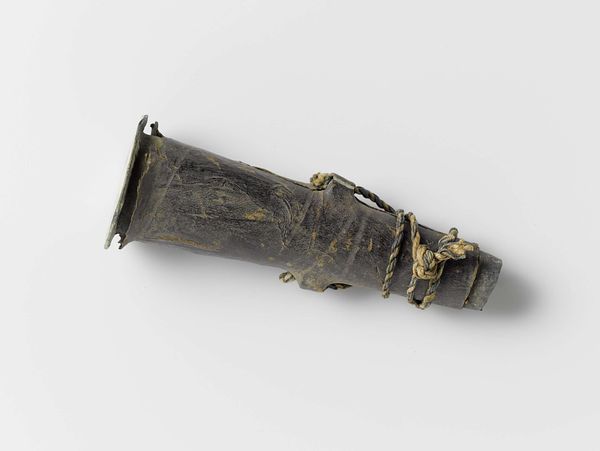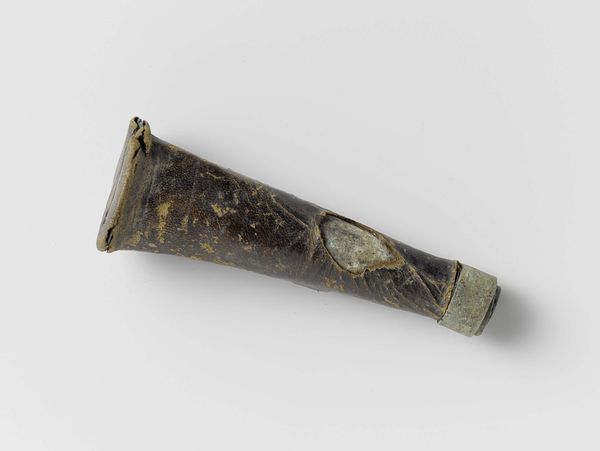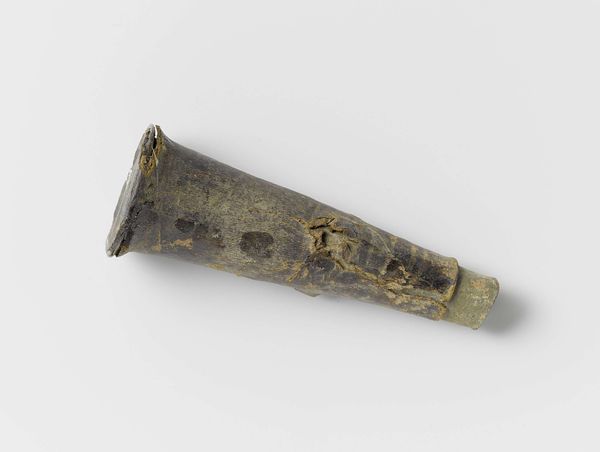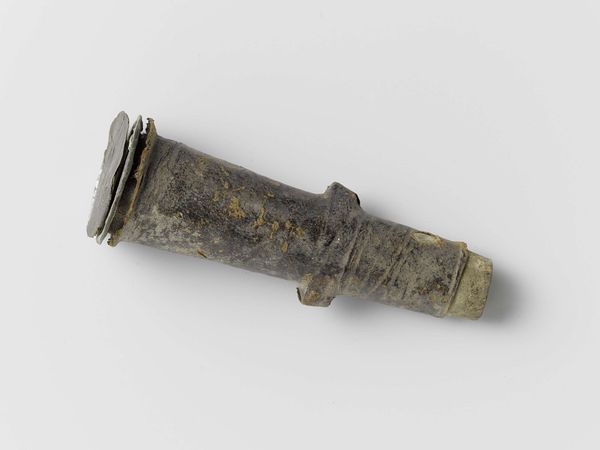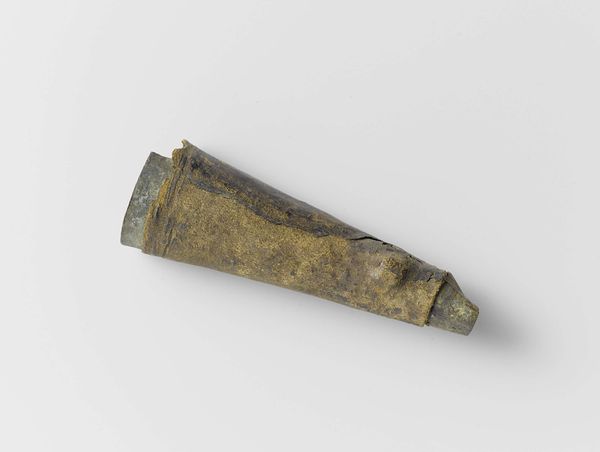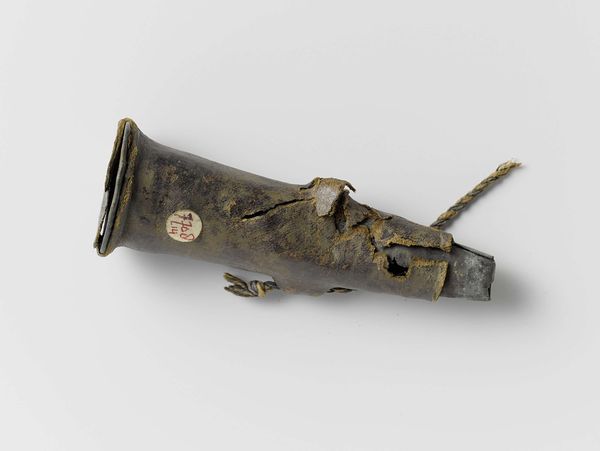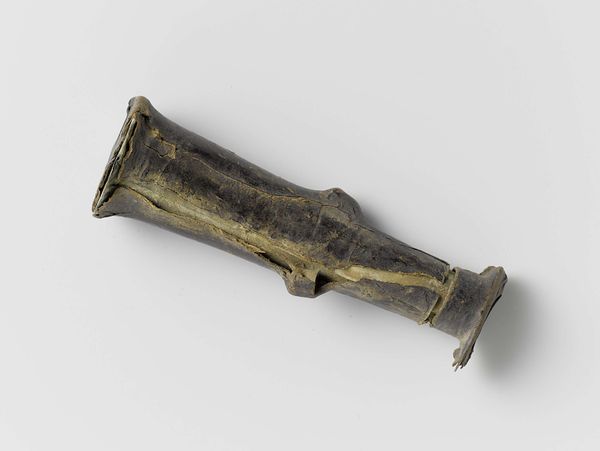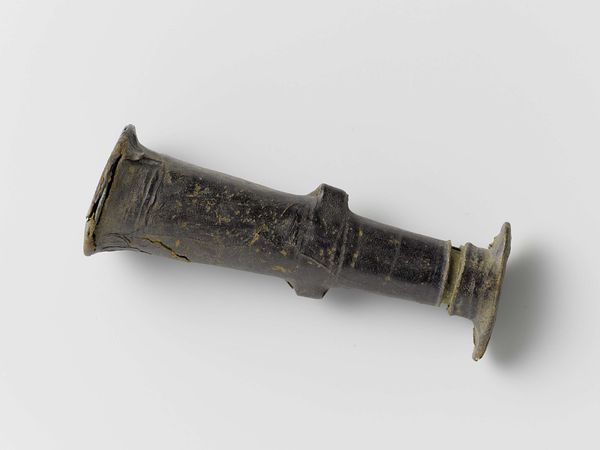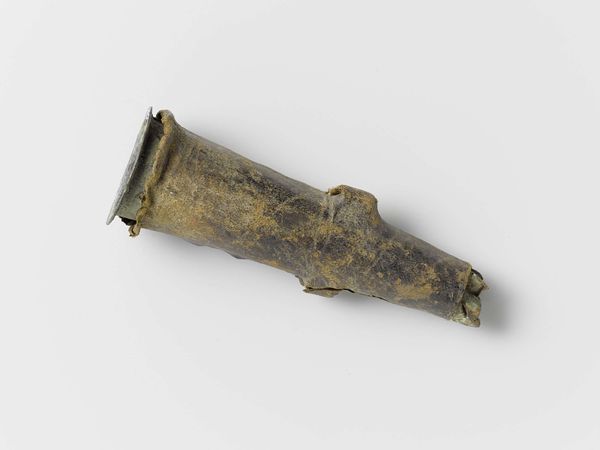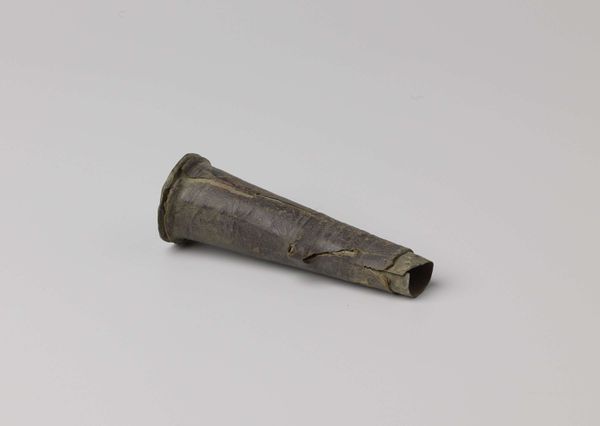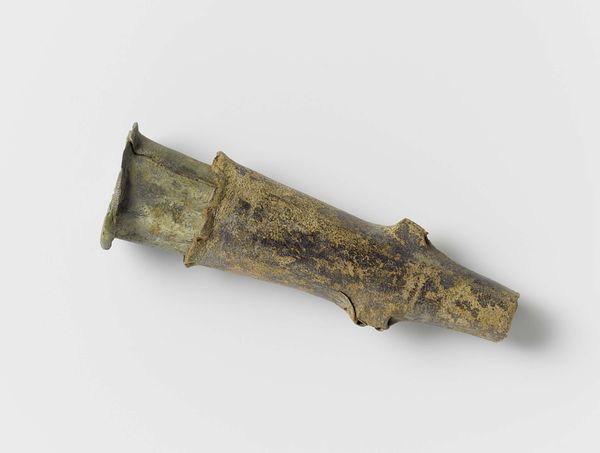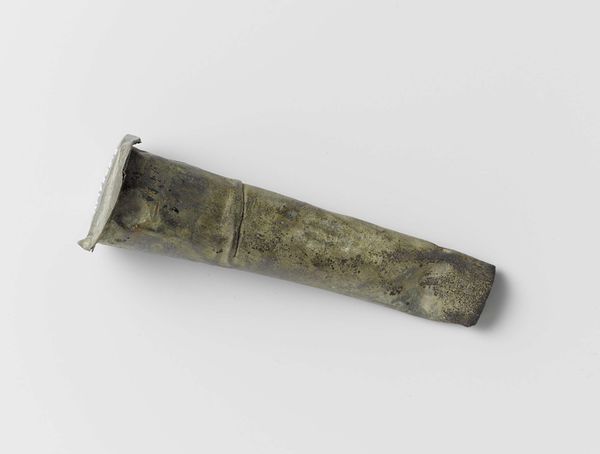
Musketmaat zonder dop, met oortjes, onderkant van messing en leer en stukje touw c. 1590 - 1596
0:00
0:00
metal, sculpture, wood
#
medieval
#
metal
#
sculpture
#
sculpture
#
wood
Dimensions: width 10.7 cm, diameter 3.7 cm
Copyright: Rijks Museum: Open Domain
Editor: We're looking at an object from around 1590-1596, a "Musketmaat zonder dop" – a musket measure without a lid – made by an anonymous artist and held at the Rijksmuseum. It seems to be made of wood, leather, and some metal, and I'm immediately struck by how worn it looks. What can you tell us about how something like this would function in society? Curator: The wear and tear are indeed significant. This isn't merely a container, but a witness to the period’s evolving military technology and its impact on social structures. The musket was revolutionizing warfare, making armies more standardized. And this humble powder measure? It represents that drive for standardization and efficiency. Editor: So, it’s more than just an object; it tells a story of institutional change? Curator: Precisely! Consider how essential reliable weaponry became for states asserting power, for maintaining trade routes, and expanding colonial reach. This measure isn't just about gunpowder; it’s about power dynamics shifting and resources being mobilized on an unprecedented scale. How does its existence within the collection of the Rijksmuseum, a national museum, further add to this narrative? Editor: It frames it as part of our national history, connecting this utilitarian object to larger narratives of Dutch identity, power, and perhaps even colonial ventures. Were there other ways this object interacted with public life? Curator: Certainly. Standardized measures like this facilitated trade with military equipment but also could be required of towns or regions to demonstrate and uphold the region's standards of weaponry and defence. Seeing such an item invites us to examine how institutions control public safety. Editor: I see. So a seemingly simple object reveals intricate networks of power and control. It’s fascinating to think about how even a small tool speaks volumes about the bigger historical picture. Curator: Indeed. Hopefully, this lens helps us realize how institutions constantly influence objects, and vice versa.
Comments
No comments
Be the first to comment and join the conversation on the ultimate creative platform.
